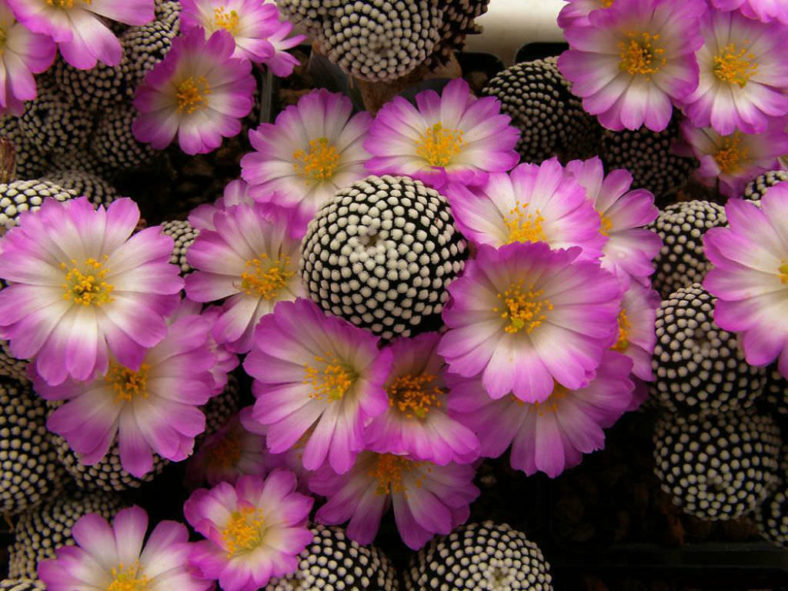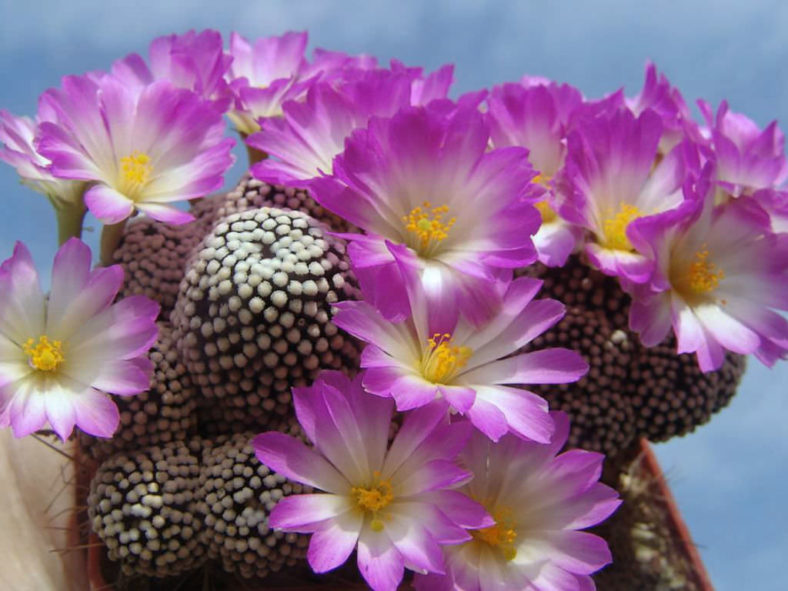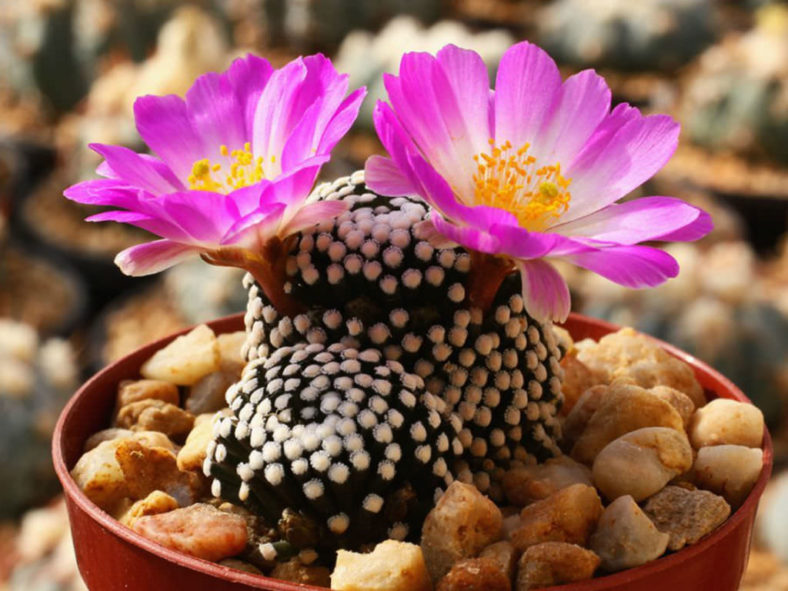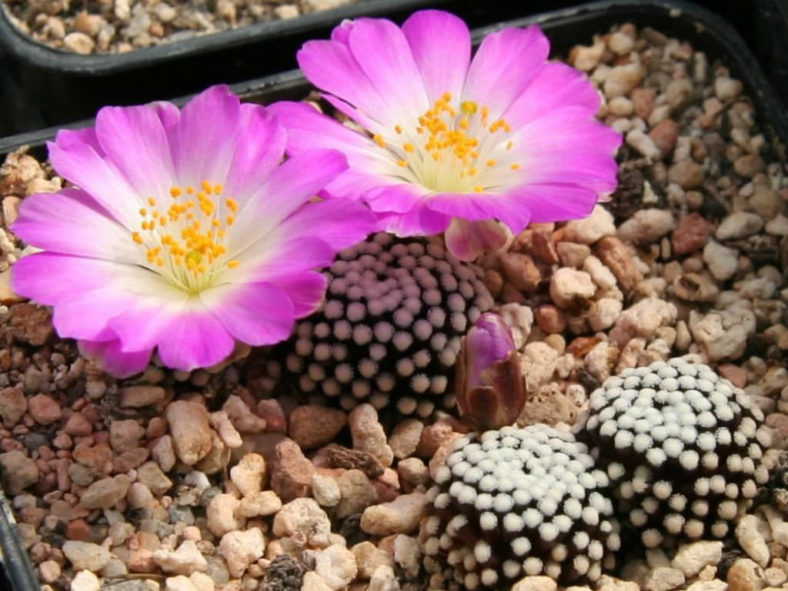Scientific Name
Mammillaria luethyi G.S. Hinton
Scientific Classification
Family: Cactaceae
Subfamily: Cactoideae
Tribe: Cacteae
Subtribe: Cactinae
Genus: Mammillaria
Etymology
The specific epithet "luethyi" (pronounced "loo-TY-eye") honors Jonas Lüthy, a Swiss botanist with a special interest in the genus Mammillaria and co-discoverer of this species.
Origin
Mammillaria luethyi is native to Mexico (northern Coahuila). It grows among the limestone gravel on flat limestone slabs in the Chihuahuan Desert at elevations of about 2,620 feet (800 m).
Description
Mammillaria luethyi is a small, eye-catching cactus with brownish, ball-shaped stems with cylindrical tubercles densely covered with tiny, white spines. It is one of the most spectacular of all Mammillarias. The subglobose stems can grow solitary or in small clusters, measuring up to 0.8 inches (2 cm) in diameter. Each areole bears more than 80 spines.
During most of the summer, Mammillaria luethyi is decorated with large flowers of striking color combinations. The flowers have rich magenta petals becoming white towards the base, intense yellow to orange anthers, and a greenish stigma. They can reach lengths and diameters of up to 1.2 inches (3 cm), often completely covering the stems. The cryptocarpic fruits are spherical, yellowish-green to reddish-green, and contain tiny black seeds. They can grow up to 0.2 inches (0.5 cm) in diameter.

How to Grow and Care for Mammillaria luethyi
Hardiness: USDA hardiness zones 10a to 11b: from 30°F (-1.1°C) to 50°F (10°C).
To encourage better flowering, allow the plants to enjoy a cooling period in the winter and suspend watering. Unlike many other cacti, which use their ribs as storage devices, Mammillaria feature raised tubercles, from which spines emerge. When you water, the tubercles expand to allow for increased water storage. The flowers emerge from the axils of these tubercles on the previous year's growth, which accounts for their interesting halo effect. The cactus mustn't be exposed to prolonged dampness or standing water. Never let your cactus sit in a dish of water. Lastly, ensure that you fertilize during the growing season for the best results.
Repot as needed, preferably during the warm season. To repot Mammillaria, ensure the soil is dry before repotting, then gently remove the pot. Knock away the old soil from the roots, removing any rotted or dead roots. Treat any cuts with a fungicide. Place the plant in its new pot and backfill it with potting soil, spreading the roots as you repot. Leave the plant dry for a week or so, then begin to water lightly to reduce the risk of root rot.
Learn more at How to Grow and Care for Mammillaria.
Links
- Back to genus Mammillaria
- Succupedia: Browse succulents by Scientific Name, Common Name, Genus, Family, USDA Hardiness Zone, Origin, or cacti by Genus
Photo Gallery
Click on a photo to see a larger version.


